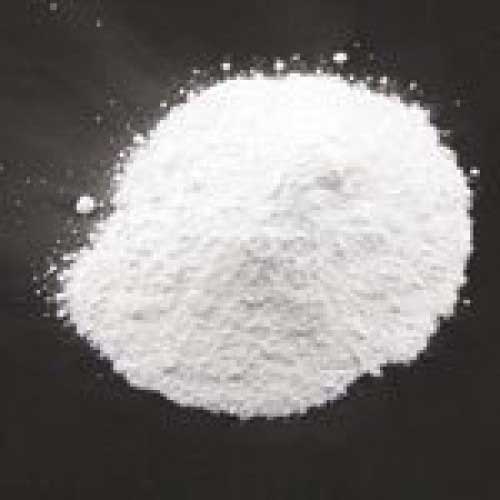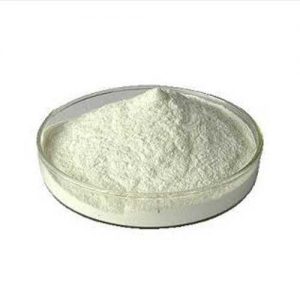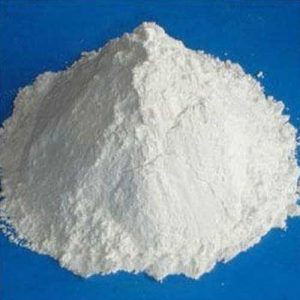- Have any questions?
- 91-22-23726950
- 91-22-23774610

Calcium Chloride
May 7, 2019
Calcium Lactate
May 7, 2019Calcium Hydroxide
Muby Chemicals established in the year 1976, is pioneer in Manufacturing Chemicals for Oil and Gas Exploration, Hydraulic Fracturing (Fracking) and coiled tube Chemicals.Our advanced chemistry leading to an innovative and high-performance product range is coupled with effective on and off site management services.
We are manufacturer of Specialty chemicals, Pharmaceutical Excipients, Fragrance & Flavorchemicals in India, which are of IP, BP, USP, Ph. Eur., FCC or Food Grade, ACS, AR or Analytical Reagent Grade, LR or Laboratory Reagent Grade, Pure and Technical Grades of various chemicals.
Specifications & Grades of Commercial Pure Hydrated Lime or Slaked Lime or Calcium Hydroxide:
| Grades | A1++ | A1+ |
| % of available lime as Ca(OH)2 | 96±1 | +94 |
| Active CaO(%) | +72.5 | +71 |
| Acid insolubles (max.)% | 0.1 | 0.2 |
| Iron | 150 PPM | 200 PPM |
| Alumina | In traces | In traces |
| Magnesia as MgO (max.)% | 0.5 | 0.55 |
| Mesh (BSS) | 500 | 400 |
| Packing Laminated. PP/ HDPE Bags with an extra HMHDP liner or in drums or as required by the buyer. | ||
We also offer synthetic Calcium Hydroxide good for precise applications like Aramid Fiber.
British Pharmacopoeia
Calcium Hydroxide BP Ca(OH)2
Calcium Hydroxide BP British Pharmacopoeia
Ca(OH)2 — 74.1
Preparation
Calcium Hydroxide Solution
DEFINITION
Content
95.0 per cent to 100.5 per cent.
CHARACTERS
Appearance
White or almost white, fine powder.
Solubility
Practically insoluble in water.
IDENTIFICATION
A. To 0.80 g in a mortar, add 10 ml of water R and 0.5 ml of phenolphthalein solution and mix. The suspension turns red. On addition of 17.5 ml of 1 M hydrochloric acid , the suspension becomes colourless without effervescing. The red colour occurs again when the mixture is triturated for 1 min. On addition of a further 6 ml of 1 M hydrochloric acid and triturating, the solution becomes colourless.
B. Dissolve about 0.1 g in dilute hydrochloric acid and dilute to 10 ml with water . 5 ml of the solution give reaction of calcium.
TESTS
Matter insoluble in hydrochloric acid
Maximum 0.5 per cent.
Dissolve 2.0 g in 30 ml of hydrochloric acid. Boil the solution and filter. Wash the residue with hot water. The residue weighs a maximum of 10 mg.
Carbonates
Maximum 5.0 per cent of CaCO3.
Chlorides
Maximum 330 ppm.
Sulphates
Maximum 0.4 per cent.
Arsenic
Maximum 4 ppm.
Magnesium and alkali metals
Maximum 4.0 per cent calculated as sulphates.
Heavy metals
Maximum 20 ppm.
ASSAY
To 1.500 g in a mortar, add 20-30 ml of water R and 0.5 ml of phenolphthalein solution. Titrate with 1 M hydrochloric acid by triturating the substance until the red colour disappears. The final solution is used in the tests for carbonates.
1 ml of 1 M hydrochloric acid is equivalent to 37.05 mg of Ca(OH)2.
Calcium Hydroxide USP Ca(OH)2
Calcium Hydroxide; Lime
Ca(OH)2 — 74.09
Calcium hydroxide [1305-62-0].
Calcium Hydroxide contains not less than 95.0 percent and not more than 100.5 percent of Ca(OH)2.
Packaging and storage— Preserve in tight containers.
Identification—
A: When mixed with from three to four times its weight of water, it forms a smooth magma. The clear, supernatant from the magma is alkaline to litmus.
B: Mix 1 g with 20 mL of water, and add sufficient 6 N acetic acid to effect solution: the resulting solution responds to the tests for Calcium.
Limit of acid-insoluble substances— Dissolve 2.0 g in 30 mL of 4 N hydrochloric acid, and heat to boiling. Filter the mixture, wash the residue with hot water, and ignite: the weight of the residue does not exceed 10 mg (0.5%).
Carbonate— Mix 2 g with 50 mL of water: the addition of an excess of 3 N hydrochloric acid to the mixture does not cause more than a slight effervescence.
Heavy metals— Dissolve 2.0 g in 20 mL of 3 N hydrochloric acid, and evaporate on a steam bath to dryness. Dissolve the residue in 20 mL of water, and filter. Dilute the filtrate with water to 40 mL, and to 20 mL of the resulting solution add 1 mL of 0.1 N hydrochloric acid, then add water to make 25 mL: the limit is 20 6g per g.
Limit of magnesium and alkali salts— Dissolve 0.50 g in a mixture of 30 mL of water and 10 mL of 3 N hydrochloric acid, and proceed as directed in the test for Magnesium and alkali salts under Calcium Carbonate, beginning with “heat the solution, and boil for 1 minute.” The weight of the residue does not exceed 12 mg (4.8%).
Assay— Transfer about 1.5 g of Calcium Hydroxide, accurately weighed, to a beaker, and gradually add 30 mL of 3 N hydrochloric acid. When the solution is dissolved, transfer it to a 500-mL volumetric flask, rinse the beaker thoroughly, adding the rinsing to the flask, dilute with water to volume, and mix. Pipette 50 mL of the solution into a suitable container, add 100 mL of water, 15 mL of 1 N sodium hydroxide, and 300 mg of hydroxy naphthol blue, and titrate with 0.05 M edentate disodium VS to a blue endpoint. Each mL of 0.05 M edetate disodium is equivalent to 3.705 mg of Ca(OH)2.
Calcium Hydroxide FCC Food Grade
Slaked Lime
Calcium Hydroxide
Ca(OH)2 Formula wt 74.10
INS: 526 CAS: [1305-62-0]
DESCRIPTION
Calcium Hydroxide occurs as a white powder. One gram dissolves in 630 mL of water at 25°, and in 1300 mL of boiling water. It is soluble in glycerin and in a saturated solution of sucrose but insoluble in alcohol.
Function: Buffer; neutralizing agent; firming agent.
REQUIREMENTS
Identification
A. Mix a sample with from 3 to 4 times its weight of water. The sample forms a smooth magma. The clear, supernatant liquid from the magma is alkaline to litmus.
B. Mix 1 g of sample with 20 mL of water, and add sufficient glacial acetic acid to effect solution. The resulting solution gives positive tests for Calcium.
Assay: Not less than 95.0% and not more than 100.5% of Ca(OH)2.
Acid-Insoluble Substances: Not more than 0.5%.
Arsenic: Not more than 3 mg/kg.
Carbonate: Passes test.
Fluoride: Not more than 0.005%.
Lead: Not more than 2 mg/kg.
Magnesium and Alkali Salts: Not more than 4.8%.
Calcium Hydroxide ACS Analytical Reagent
Calcium Hydroxide
Ca(OH)2
Formula Wt 74.09
CAS Number 1305-62-0
REQUIREMENTS
Assay: 95.0% Ca(OH)2 and 3.0% CaCO3
MAXIMUM ALLOWABLE
Insoluble in hydrochloric acid: 0.03%
Chloride (Cl): 0.03%
Sulfur compounds (as SO4): 0.1%
Heavy metals (as Pb): 0.003%
Iron (Fe): 0.05%
Magnesium (Mg): 0.5%
Potassium (K): 0.05%
Sodium (Na): 0.05%
Strontium (Sr): 0.05%




